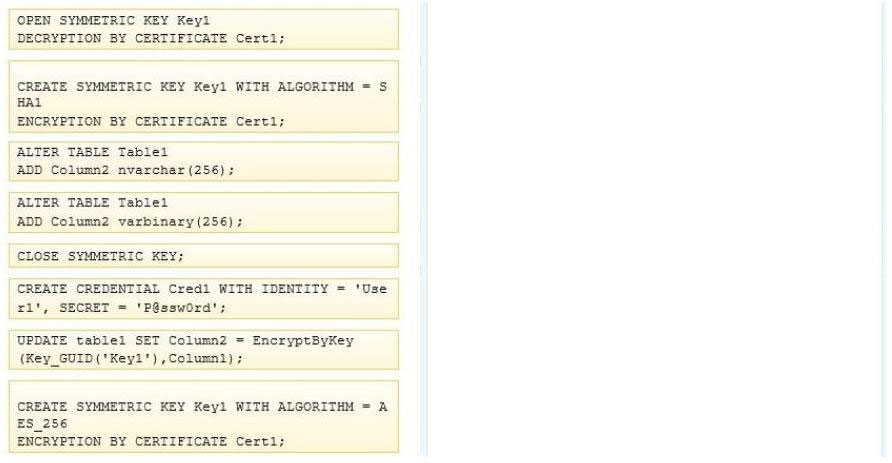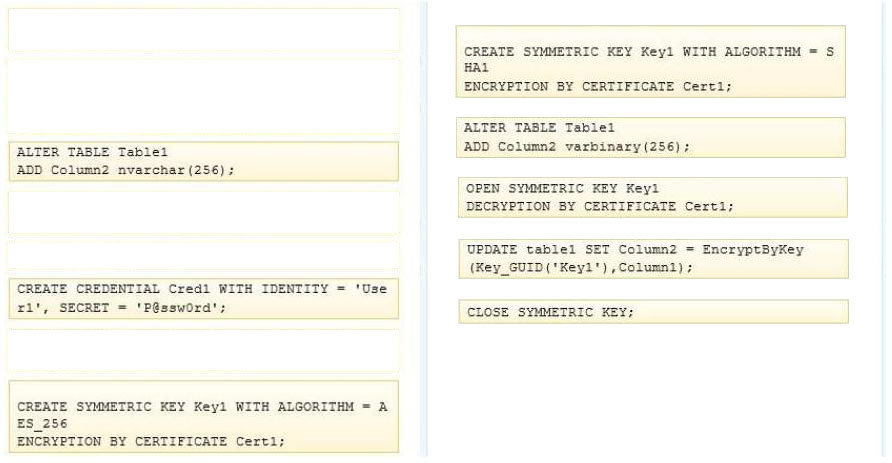

DRAG DROP -
You have a table named Table1 that contains 1 million rows. Table1 contains a column named Column1 that stores sensitive information. Column1 uses the nvarchar (16) data type.
You have a certificate named Cert1.
You need to replace Column1 with a new encrypted column named Column2 that uses one-way hashing.
Which code segment should you execute before you remove Column1?
To answer, move the appropriate code segments from the list of code segments to the answer area and arrange them in the correct order.
Select and Place:

Meir
4 years, 10 months ago